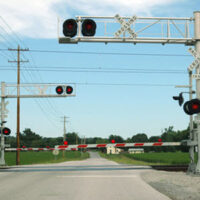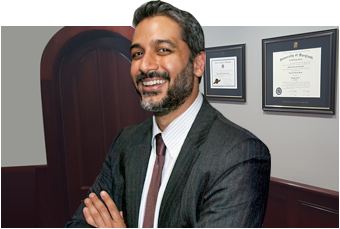Rail Crossings are Dangerous

The most dangerous corridor in the nation: that’s what one expert called a stretch of track that runs just under two miles long in Rosedale. The reason? The tracks have seen over 40 collisions in the past 50 years or so, the most recent of which occurred in May 2023 involving two trucks that were stopped on the tracks. Fortunately, this collision was injury-free, but that’s not always been the case on this section of track. Two fatalities, 19 injuries, and countless dollars in destroyed property have not managed to create the will to address the safety issues associated with the private rail line.
Mitigating Accidents
Fortunately, across the country train/motor vehicle accidents have declined by more than 20 percent in recent decades. Nonetheless, there are far more such collisions producing serious outcomes, indicating that the topic of safety should not be ignored. Federal money—to the tune of hundreds of millions of dollars—is invested in maintaining rail crossings, developing more effective technology, and educating the public. Unfortunately, while busy roads generally have the gates and lights necessary to warn of oncoming trains, rural highways and private roads are protected by only stop signs and/or crossbucks. So even though collisions are down, fatalities related to train crashes are on the uptick.
Staying Safe
Experts say the ratio of a locomotive to a car is similar to the ratio of a car to a soda can. Imagining that a 400,000 pound train smashing into a motor vehicle could produce results similar to that of a car running over an aluminum can is astounding, but accurate. And while a truck or car can stop relatively quickly in an emergency, it takes a train a mile or more to come to a stop when traveling at 55 MPH. Clearly, motorists and pedestrians would be smart to play it safe around tracks:
1- When you see a train approaching, don’t assume you can sneak across the tracks because the train appears to be moving slowly or seems far away.
2- Remember that locomotives are able to travel both backward and forward, so don’t presume you’re in the clear because a train has passed by.
3- Anticipate that any track could have a moving train coming your way at any time, even if no warning signs indicate as much.
4- Avoid walking or playing along tracks.
5- Understand that trains generally extend about a yard beyond the tracks in both directions, meaning you must allow room for them to pass.
6- Never ignore or try to beat the signals and crossing-rails. It’s just not worth the risk.
After an Accident
While it may sometimes be difficult to ascertain who is at fault in an accident involving a train, determining the truth is always worthwhile. The LaPlata & Waldorf personal injury attorneys at The Law Office of Hammad S. Matin, P.A. investigate and pursue damages for clients who are injured or killed due to the negligence or recklessness of others. If you need legal advice, schedule a confidential consultation today.
Source:
wbaltv.com/article/i-team-uncovers-cause-of-rosedale-train-crash-data-shows-dozens-of-crashes/43864772

